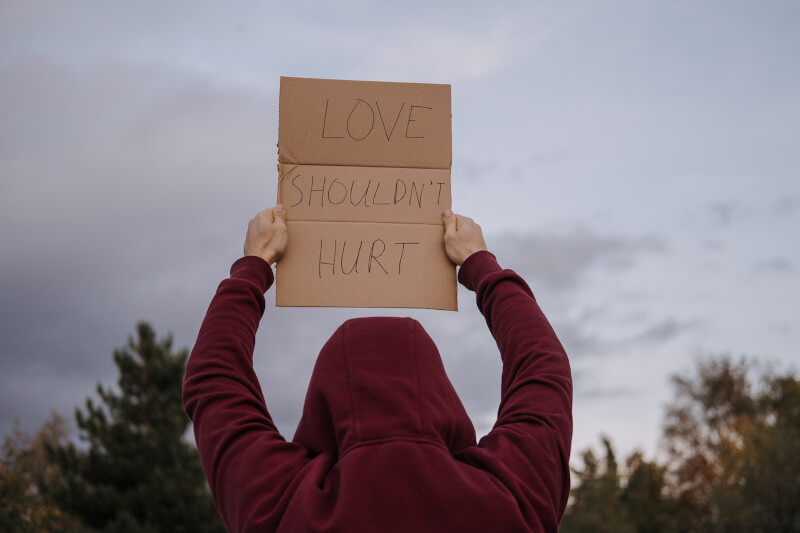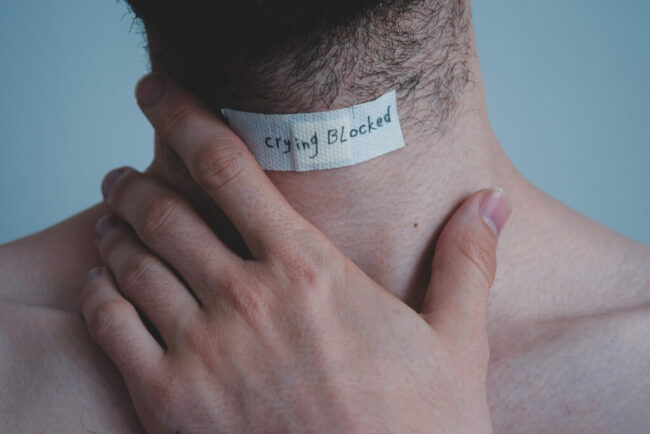The United Nations organizes a campaign called the 16 Days of Activism against Gender-Based Violence every year at the beginning of December. The problem can affect people of any sex, gender, or gender identity, so everyone should be concerned about it.
The absence of men who have been victims of violence as well as attempts to prevent violence against men and boys is striking in the context of the discussion regarding gender-based violence. Even though there is abundant evidence that men have been the victims of violent crime in Canada, the United States, and other countries, there are almost no services available to men.
Men as Victims of Violence Committed by Intimate Partners
Men have a disproportionately high rate of being victims of both homicide and suicide. Investigation on intimate partner violence — which was recently brought to light by the case of Johnny Depp vs. Amber Heard — implies that men might also become targets of partner violence committed by female partners.
Self-reported population studies, which are one of the primary sources of data on partner violence, found that 19.3% of men in western Europe and North America encounter physical abuse in an intimate relationship every year.
Between the years 2004 and 2014, approximately 655,000 men in Canada disclosed having been the victims of physical violence in the context of intimate relationships. In addition, approximately 64,000 of these men were victims of the most severe form of partner abuse, which is categorized by repetitive and drastic physical and psychological violence, as well as a high probability of injuries and adverse emotional effects.
A study conducted in the United States found that people who are in relationships with people of the same sexual orientation are more likely to suffer from higher levels of domestic abuse. Male partners were involved in just over half (55%) of the cases of same-sex partner violence that were reported to the police in Canada. When it comes to talking about their experiences or looking for assistance, these people may encounter unique obstacles.
We are also discovering that men have a greater likelihood of experiencing legal and organizational abuse in the context of romantic relationships, such as false allegations of abuse. According to the findings of a survey conducted in 2020, 11% of American men have stated that they have been wrongfully accused of domestic abuse or other types of abuse.
When men try to get help for issues related to domestic violence, they frequently face gender-specific barriers, but there are far fewer options provided to them than there are for women.
According to police-reported statistics, which constitute the second most important source of data, women are more likely to be the victims of the most severe forms of injurious violence and homicide committed by an intimate partner. The data that was reported to the police also shows that women and girls constitute almost 70% of the victims of family violence in Canada. However, there are some restrictions on the data that the police report. For instance, approximately 80% of abuse victims don’t ever report the incident to the police, and men are more likely to fail to report spousal violence in comparison to women.
Despite underreporting, data collected by the police revealed worrying tendencies regarding male victims of family violence. In Canada, the rates of family violence that were reported to the police between 2009 and 2021 reduced by 5% for women and girls, but increased by 5% for men and boys.
Vacancy in Terms of Services for Men
Men, like other victims, require attention and assistance in recognizing abuse at an earlier stage so that they can deal with the effects of abuse in a more productive manner.
In 2020, I was a part of an international study that found gender-specific barriers that prevented men from seeking help. These gender-specific barriers included not acknowledging or calling what occurred to their abuse, attempting to live up to notions of “masculinity” (being a target may be seen as emasculating), attempting to correct the relationship, protecting kids, and simply having nowhere to go for help.
The provision of services to male victims of abuse is significantly inferior to that provided to female victims of partner violence. Only 24 of Canada’s 557 residential facilities for crime victims that are funded by the government are required to also serve male victims, while the rest are only required to serve female victims.
Putting an End to the Vicious Cycle of Violence

Abuse in the home can affect people of any age, not just adults. A significant proportion of society is plagued by the issue of children being exposed to domestic violence, which occurs when a parent assaults another parent or partner in the presence of the child.
It is estimated that approximately 25 percent of young people in the United States will be affected by it at some point in their lives. Children of men who are mistreated by their female partners commonly encounter direct emotional and physical abuse, as well as the trauma of witnessing their parents being abused.
It is possible to break the cycle of violence, also known as the developmental trajectories of violence, by taking preventative measures against any partner who might be violent. At this age, children who have been witness to or have experienced abuse are at a greater risk of having violent partner relationships than adults.
In addition, incidents of physical abuse during childhood, such as being kicked, bit, punched, choked, burned, or attacked in another manner, are significantly more likely to occur in boys than they are in girls. Men may be less likely to commit acts of violence against women and children in their future relationships if this form of abuse is eradicated.
There is a widespread misconception that the vast majority of violent acts committed by intimate partners are carried out exclusively by men and are directed toward women. Bidirectional violence, on the other hand, is by far the most typical form of abuse. That is violence that is committed by both parties in a relationship as well as violence that is experienced by both parties. Approximately 58% of the cases of domestic violence that were reported involved both partners.
The effects of the violence that occurs in both directions can be extremely detrimental, causing both partners to be at risk for serious physical and mental health issues. It is possible to reduce violence against both men and women by recognizing and addressing partner violence, which involves couples who are violent toward one another.
Assisting Men Means Protecting Lives
There is compelling evidence to suggest that assisting male survivors of domestic violence can help decrease the likelihood of homicide committed by either gender. Research conducted in the United States and Canada has shown that there is a reduction in the number of homicides committed by women when mistreated, women can escape violent relationships, such as by seeking refuge in a shelter designed specifically for abused women.
If abused men had equivalent chances to get timely help, it could inhibit abusive relationships from intensifying, and it could reduce male-perpetrated homicides.
It is past time that men’s perceptions of violence and abuse, not just as offenders but also as victims, be acknowledged and taken seriously. It is essential, but not sufficient, to get men involved in the fight against gender-based violence against women.
The next significant step toward eradicating intimate partner violence is to provide assistance to men and boys in preventing violence in their own lives and to assist them in coping with the effects of abuse at the hands of a partner by offering them support.



